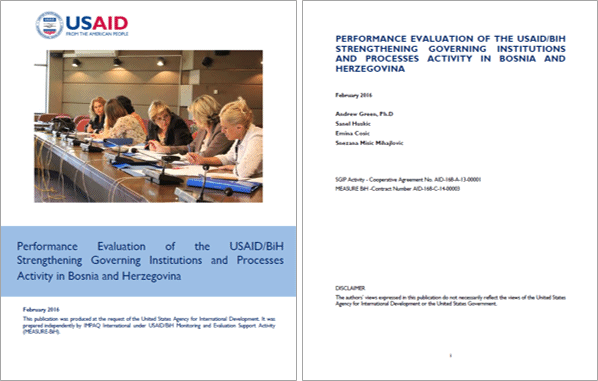MONITORING AND EVALUATION SUPPORT ACTIVITY (MEASURE)

MONITORING AND EVALUATION SUPPORT ACTIVITY (MEASURE)
Performance Evaluation - SGIP
| Performance evaluation of Strengthening Governing Institutions and Processes (SGIP) activity is the first performance evaluation conducted by MEASURE-BiH for USAID-BiH. SGIP supports BiH efforts toward Euro-Atlantic integration by strengthening the capacity of the country’s governing institutions to adopt, implement, and account for more effective policies, laws, and budgets that address critical EU accession related issues. It is implemented within four components:
SGIP began in May 2013, is scheduled to end in January 2017, with a total estimated cost of $5.9 million. The purposes of this performance evaluation are to: (1) assess SGIP’s progress toward stated objectives; (2) identify obstacles to SGIP implementation; and (3) provide recommendations for activity design adjustments for the remainder of the activity, including whether to extend the period of performance. The evaluation questions are:
|
click on the image to download file |





